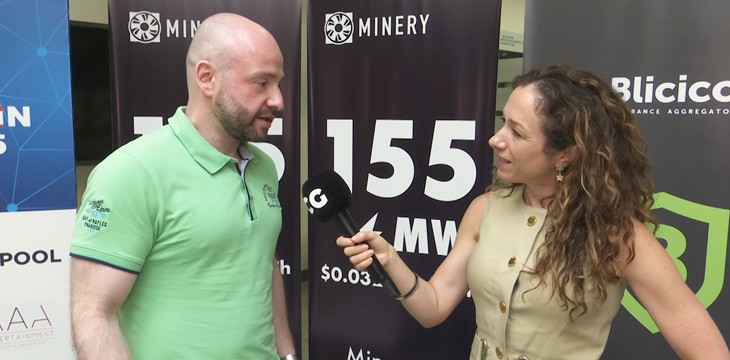|
Getting your Trinity Audio player ready...
|
Cryptocurrency mining has shifted over the years as miners seek the regions with the best conditions and the least costs. Ilya Bruman has managed to find one: Siberia, a vast region in Russia and Northern Asia. During the Baikal Blockchain Summit, he spoke to CoinGeek’s Becky Liggero and explained why Siberia is the ideal location for miners and how his company has managed to find great success in crypto mining.
Minery is a cryptocurrency mining company based in Siberia, an extensive province that spans most of Northern Asia. It allows its clients to engage in crypto mining without the hassle of buying and maintaining the equipment.
Siberia is an ideal location for crypto mining, Bruman stated. One of the reasons for this is the low cost of electricity. The average cost of electricity in the region is $0.0032 per kWh, way lower than other regions globally. Minery relies on hydroelectric power generated by the Bratsk Electric Grid Company, JSC (BEGC).
The second reason is the temperature in Siberia. Bruman explained:
The other reason is climate. The average temperature is –2°C per year. So it’s quite cold and we spend less money to cool the equipment.
Minery has been successful so far, boosted by the good recommendations it gets from its satisfied clients. The company has some of the lowest charges, with an uptime of 99.9%.
“And this is the main thing in mining; the uptime of the equipment, how much the equipment works, because soon as the equipment stops working, you start losing your money. And the clients know that we’re stable, so they just tell their friends,” Bruman stated. “Actually, we don’t do any advertisement.”
BTC and BCH have historically been the most popular cryptos with Minery’s clients. However, in the past year, many miners have shifted to BSV, Bruman said. Other cryptos such as LTC and ETH have a small minority of miners.
Despite having a financial background, Bruman believes that this is the best field to be in as the world shifts to digital currencies. “The future is digital money,” he concluded.

 12-25-2025
12-25-2025 




